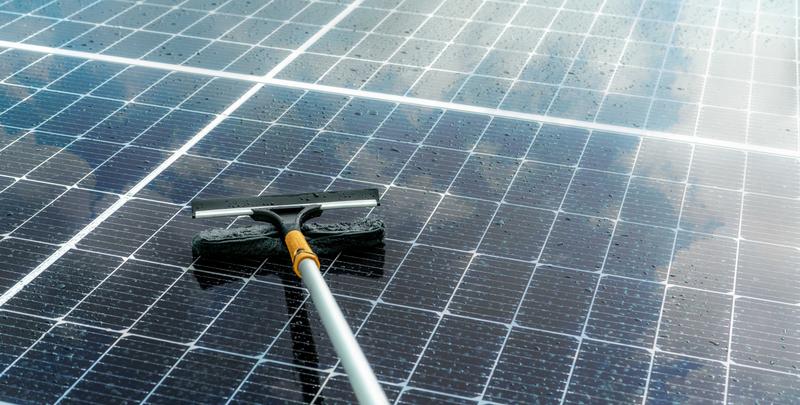
In case you’re hunting for a substantial-general performance
Why Solar Panel Cleaning Issues
Solar panels capture Electricity at their best when clear. Dust, pollen, bird droppings, and smog minimize performance—from time to time by twenty% or maybe more. Normal cleansing helps sustain optimal effectiveness, extend panel life, and safeguard your expenditure.
Principal Added benefits:
- Improved Power output
- Lower electricity bills
- Extended panel lifespan
- Lowered hazard of micro‑cracks as a result of thermal hotspots
Varieties of Photo voltaic Cleansing Resources
Picking out the suitable Device is dependent upon your setup, drinking water availability, and sought after convenience. Types include:
- H2o‑powered photo voltaic brush methods
- Transportable solar panel cleansing package bundles
- Pure drinking water cleansing methods
- Rotary solar brushes and extension poles
Water Powered Photo voltaic Brush Devices
These brushes hook up with a h2o supply and spin when dispensing drinking water, combining cleaning and lubrication in a single step. The end result: spotless panels without the need of scratching.
Essential Characteristics:
- Built-in water feed from the brush head
- Gentle bristles Risk-free for glass surfaces
- Rotary motion minimizes manual exertion
- Mounts on extension poles for rooftop access
Moveable Photo voltaic Panel Cleaning Kit
A complete
- Brush head (preset or rotating)
- Extension pole (adjustable lengths as much as 6 m)
- Hose adapters or quick‑hook up fittings
- Pure‑water tank or filtration technique
- Delicate microfiber towels or squeegees
- Non‑abrasive cleansing Option (if permitted)
Benefits of All-in-One Kits:
- Start out cleaning with minimum setup
- Compact for storage or vacation
- Suitable with household or industrial photo voltaic arrays
Pure Drinking water Solar Cleansing Techniques
These systems purify community h2o—getting rid of minerals and dirt—so it received’t leave scale or streaks. Pure water empowers professional-grade benefits with out chemicals.
How It Works:
- Pretreatment filtration (sediment, carbon, ion exchange)
- Ultimate deionization or reverse‑osmosis phase
- Filtered water circulated through brush for cleaning
- Residue‑totally free drying—no spots or streaks remaining at the rear of
Rotary Photo voltaic Brush & Extension Poles
For giant photo voltaic arrays or professional use, a power-rotating head with a telescoping extension pole helps make cleansing economical and Secure.
Positive aspects:
- Less physical exertion, quicker coverage
- Arrive at roofs and floor‑mounted panels simply
- Adjustable shaft lengths for varying angles
- Common speedy‑link methods for equipment
Target Security & Most effective Procedures
Cleansing solar panels entails heights and slippery surfaces—safety first:
- Use non‑conductive extension poles
- Stay clear of pressure washers that could crack glass
- Operate early or late in order to avoid glare and heat
- Have on grips and slip-resistant sneakers
- Notice area h2o‑use regulations or constraints
Phase‑by‑Action Cleaning Schedule
- Flip from the photo voltaic inverter or be certain process is deactivated
- Rinse panels with very low‑force water
- Make use of a brush (or photo voltaic brush kit) with drinking water feed
- Scrub Carefully in overlapping, linear passes
- Rinse comprehensively with clean water
- Dry with microfiber squeegee or delicate towel—only if essential
Picking out the Suitable Photo voltaic Panel Cleaning Instrument
Look at your set up and also your drinking water access:
brush for cleaning solar panels
Maintenance & Treatment Strategies
- Flush hose and brush following Every single use
- Retail outlet dry, clean up, and away from UV publicity
- Switch worn brush heads—and check bristle softness
- Inspect seals and connectors for leaks
- Switch or clean up filters in pure‑drinking water techniques routinely
Eco-Friendly Cleansing Gains
Accurate cleaning prolongs photo voltaic panel efficiency and decreases Strength waste. Employing drinking water on your own—devoid of soaps or substances—can help protect nearby ecology and avoids runoff air pollution.
How Photo voltaic Panel Cleansing Impacts ROI
Clever maintenance employing high quality brushes and kits keeps method performance topped up, cutting down the payback period and maximizing Strength produce over time.
Expense Things to consider & Benefit
- H2o‑run solar brushes are Value-effective and durable
- Pure water programs have to have upfront expense but supply regular, place‑absolutely free cleansing
- Rotary brush kits Improve efficiency—worthwhile for large installations
- Do it yourself kits help save labor expenditures; Experienced services Price tag extra but liberate your time and efforts
Frequent Utilizes of Photo voltaic Panel Brushes
- Residential rooftops
- Commercial photo voltaic farms
- RV or mobile installations
- Solar carports
- BIPV segments (building‑built-in photovoltaics)
Consumer Testimonies & Use Situations
“This solar panel cleansing brush manufactured a apparent variation inside of minutes—dust gone, no streaks, and our output improved!”
“Upgrading into a h2o‑run photo voltaic brush saved hours of scrubbing. Combined with a pure drinking water procedure, the panels looked completely new.”
FAQs About Solar Panel Cleaning
How often really should panels be cleaned?
Every 6 to 12 months, according to your weather—additional normally in dusty or pollen-heavy locations.
Can rain clean up photo voltaic panels?
Rain allows but doesn’t reduce Dust buildup or film layers—handbook cleansing yields greater effectiveness.
Am i able to use tap water?
Faucet drinking water may possibly leave mineral residue. A
Can cleansing problems panels?
Provided that abrasive resources or significant-stress washers are made use of. Constantly use gentle bristles, low-strain, and abide by maker guidelines.
Pro Tricks for Photo voltaic Panel Proprietors
- Clear early early morning or night to avoid thermal pressure
- Observe output information—if general performance drops, clean up panels
- Maintain panels angled—standing water promotes algae growth if left as well extended
- Rotate brush heads periodically to keep up even use
Conclusion: A Brush for Every Want
Irrespective of whether you’re searching for a price-helpful
Investigate the full line of brushes and components created specifically for photo voltaic cleaning at